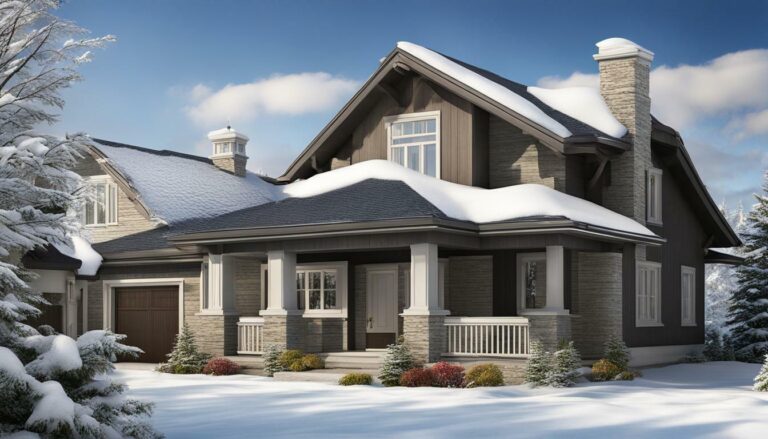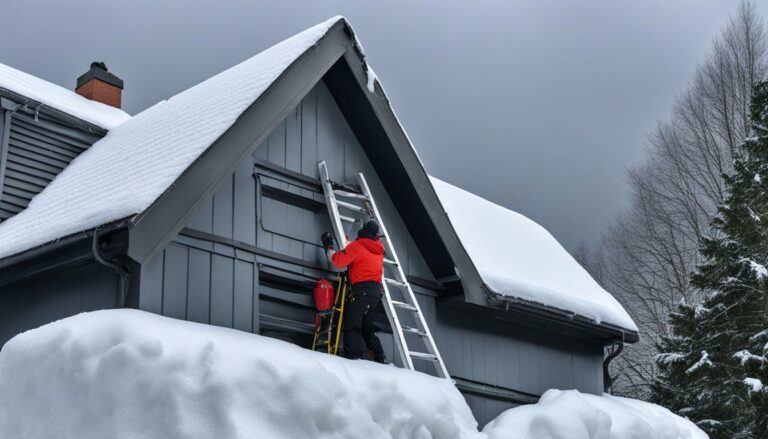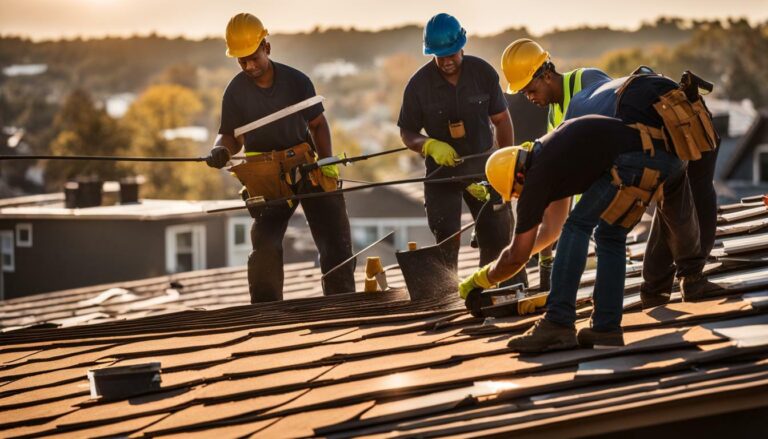Understand the Roof Ventilation Importance for Your Home
Proper roof ventilation is crucial for maintaining your home’s structural integrity and protecting it from various issues. It plays a vital role in creating a healthy and comfortable living environment. By allowing air to circulate freely in the attic, roof ventilation helps prevent condensation, mold, and rot, ensuring the longevity of your home.
But the benefits of roof ventilation go beyond moisture prevention. They also extend to energy efficiency, cost savings, and improved indoor comfort. With the right ventilation system in place, you can reduce cooling costs, prevent heat buildup in the attic, and regulate indoor temperature extremes. Additionally, roof ventilation helps prevent ice damming in cold climates by redirecting warm air away from the roof.
Key Takeaways:
- Proper roof ventilation prevents condensation, mold, and rot
- Roof ventilation improves energy efficiency and reduces cooling costs
- It extends the lifespan of your roof by keeping it dry
- Roof ventilation enhances indoor comfort by regulating temperature extremes
- It prevents ice damming in cold climates
By understanding the importance of roof ventilation and its many benefits, you can ensure the longevity and well-being of your home. Implementing an optimal roof ventilation system and regularly maintaining it will contribute to a healthier and more comfortable living space for you and your family.
The Role of Roof Ventilation in Moisture Prevention
Effective roof ventilation plays a vital role in preventing moisture-related issues like condensation, mold, and rot by allowing moisture to escape from the attic. These problems can arise when warm, moist air becomes trapped in the attic, leading to a buildup of moisture that can damage the roof’s structure and compromise the overall integrity of the home. By implementing proper roof ventilation, you can create a continuous airflow that helps remove excess moisture from the attic, ensuring a dry and healthy environment.
One of the key reasons why attic ventilation is crucial is that it helps regulate humidity levels. According to experts, the ideal humidity range for an attic is between 30% and 50%. Without adequate ventilation, the humidity levels can rise, creating a favorable environment for mold growth and wood rot. Moisture-related issues can not only affect the structural integrity of your home but also pose health risks to you and your family.
Proper roof ventilation also aids in preventing condensation, which occurs when warm air meets a cold surface. In colder climates, this can lead to the formation of ice dams, which can damage the roof and cause leaks. By allowing warm air to escape from the attic, roof ventilation helps keep the roof’s surface temperature closer to the outside temperature, reducing the risk of condensation and ice damming.
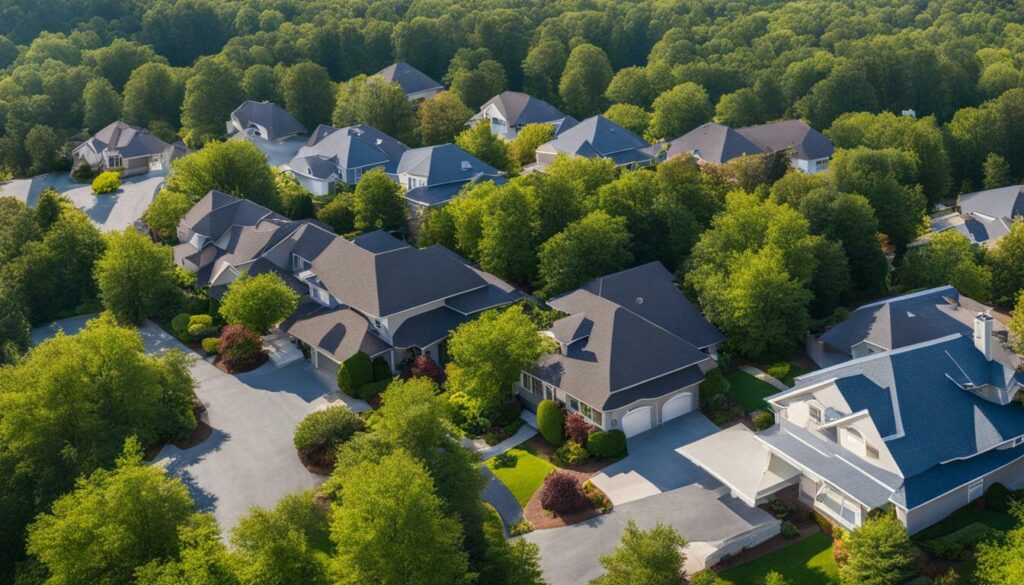
When it comes to roof ventilation, it’s essential to strike a balance between intake and exhaust vents. The goal is to create a continuous airflow that allows fresh air to enter the attic through intake vents and exit through exhaust vents. It is generally recommended to have equal amounts of intake and exhaust vents, or slightly more intake vents for a slightly pressurized system. This ensures proper ventilation and prevents any potential issues that may arise from an unbalanced system.
In conclusion, the role of roof ventilation in preventing moisture-related issues cannot be overstated. By implementing effective ventilation systems, you can maintain a dry and healthy attic, prevent condensation, mold, and rot, and extend the lifespan of your roof. Additionally, proper roof ventilation plays a crucial role in regulating indoor temperature extremes and preventing ice damming. Invest in a well-designed ventilation system to ensure the long-term health and durability of your home.
Energy Efficiency Benefits of Roof Ventilation
Implementing proper roof ventilation can significantly improve energy efficiency in your home, resulting in reduced cooling costs and a more comfortable living environment. With the right roof ventilation system, you can effectively mitigate heat buildup in the attic and create a balanced airflow throughout your home.
One of the key advantages of effective roof ventilation is its ability to reduce cooling costs. By allowing hot air to escape from the attic, roof vents prevent heat from accumulating and radiating into the living spaces below. This helps to maintain a more consistent temperature throughout the house, reducing the need for excessive air conditioning and ultimately lowering your energy bills.
Another energy efficiency benefit of proper roof ventilation is the prevention of heat transfer from the attic to the living areas. In warmer climates, attics can reach extreme temperatures, which can result in uncomfortable living conditions. By allowing hot air to escape through exhaust vents, roof ventilation helps to keep the attic cooler, reducing the strain on your air conditioning system and improving overall comfort.
| Benefits of Proper Roof Ventilation: |
|---|
| Reduces cooling costs |
| Prevents heat buildup in the attic |
| Improves overall comfort |
| Extends the lifespan of the roof |
Additionally, proper roof ventilation can contribute to the longevity of your roof. By maintaining a dry environment in the attic, roof vents help to prevent moisture-related issues, such as rot and mold growth. This protects the underlying structure of your roof, ensuring its durability and extending its lifespan.
In summary, the benefits of proper roof ventilation are numerous, with energy efficiency being a significant advantage. By reducing cooling costs, preventing heat buildup, and extending the lifespan of your roof, effective roof ventilation plays a crucial role in creating a comfortable and sustainable living environment for you and your family.

By keeping the wood framing and underlayment dry, roof ventilation plays a crucial role in extending the lifespan of your roof and ensuring its durability. Without proper ventilation, moisture can get trapped in the attic, leading to rot, decay, and structural damage. This can significantly reduce the lifespan of your roof and result in costly repairs or even roof replacement.
One of the key benefits of roof ventilation is its ability to prevent moisture-related problems. When moisture accumulates in the attic, it can lead to the growth of mold and mildew, which not only affects the structural integrity of the roof but also poses health risks to you and your family. Adequate ventilation allows moisture to escape, keeping the attic dry and preventing the growth of mold and mildew.
| Benefits of Proper Roof Ventilation: |
|---|
| Extends the lifespan of your roof. |
| Prevents rot, mold, and decay. |
| Improves indoor air quality. |
| Reduces the risk of structural damage. |
In addition to protecting your roof from moisture-related issues, proper roof ventilation also helps regulate attic temperature. During hot summer months, without adequate ventilation, the attic can become excessively hot, causing the temperature inside your home to rise as well. This can lead to increased cooling costs and discomfort. By allowing hot air to escape, roof ventilation helps maintain a cooler attic temperature and reduces the strain on your cooling system, ultimately saving you money on energy bills.
It’s important to note that proper roof ventilation is not just about having enough intake and exhaust vents, but also ensuring they are correctly installed and positioned. Consulting with a roofing professional can help you determine the best roof ventilation system for your home and ensure it is installed properly to maximize its effectiveness.
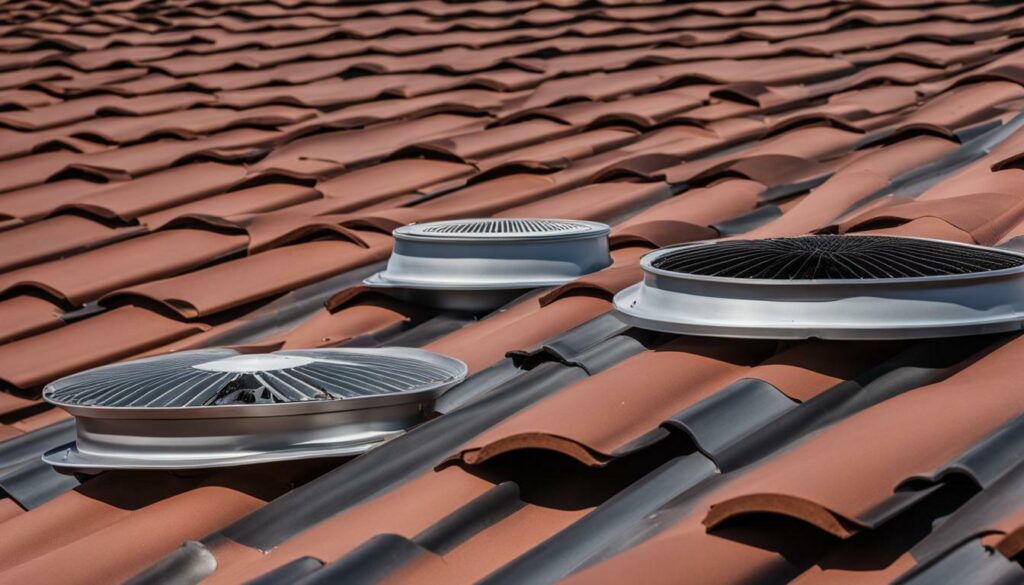
“Proper roof ventilation is essential for the longevity and performance of your roof. It helps prevent moisture-related problems, improves energy efficiency, and enhances indoor comfort. Don’t overlook the importance of installing and maintaining a good roof ventilation system.”
Enhancing Indoor Comfort with Proper Ventilation.
Proper roof ventilation is essential for regulating indoor temperature extremes, creating a more comfortable living environment throughout the year. Not only does it contribute to a cooler home in the summer by preventing heat buildup in the attic, but it also helps to maintain warmth during the winter by allowing proper airflow and preventing moisture-related issues such as condensation and mold.
By allowing hot air to escape during the summer months, roof ventilation reduces the strain on your air conditioning system and lowers cooling costs. It also prevents the accumulation of heat in the attic, which can radiate down into your living spaces and cause discomfort. With proper ventilation, you can enjoy a more consistent and pleasant indoor temperature all year round.
In addition to temperature regulation, roof ventilation plays a crucial role in maintaining good air quality within your home. Without adequate ventilation, stale air can become trapped in the attic, leading to a buildup of pollutants and allergens. This can have a detrimental impact on the health and well-being of your household. However, with proper ventilation, fresh air is circulated, helping to remove odors, toxins, and excess humidity, resulting in a healthier indoor environment for you and your family.
Expert Tip: Ensure Proper Airflow with Balanced Ventilation.
To achieve optimal comfort and ventilation in your home, it is important to have a balanced ventilation system. This means having equal amounts of intake and exhaust vents or slightly more intake vents for a slightly pressurized system. This balanced airflow ensures that fresh air is continuously supplied while stale air is efficiently removed.

| Benefits of Proper Roof Ventilation |
|---|
| Regulates indoor temperature extremes |
| Improves energy efficiency |
| Prevents condensation, mold, and rot |
| Enhances air quality |
| Reduces cooling costs |
| Extends the lifespan of the roof |
“Proper roof ventilation is the key to a comfortable and healthy home. By allowing for a regulated airflow, it not only improves indoor comfort but also prevents moisture-related problems and increases energy efficiency.”
Investing in proper roof ventilation is a smart choice for homeowners looking to enhance their indoor comfort, reduce energy costs, and protect their home’s structural integrity. With the right balance of intake and exhaust vents, you can enjoy a more comfortable living space while ensuring the longevity of your roof. Don’t underestimate the importance of roof ventilation for a healthier and happier home.
Preventing Ice Damming with Roof Ventilation
Proper roof ventilation is essential in cold climates to prevent ice damming by efficiently directing warm air away from the roof’s surface. Ice dams occur when snow on the roof melts and refreezes along the eaves, causing water to back up and potentially leak into the home. By maintaining a continuous airflow in the attic, roof ventilation helps regulate the temperature and prevent the formation of ice dams.
One of the advantages of effective roof ventilation is that it helps maintain a consistently cool attic temperature. When warm air from the living spaces below rises into the attic, it can cause the snow on the roof to melt. Without proper ventilation to allow this warm air to escape, the melted snow refreezes along the eaves, leading to the formation of ice dams. By prioritizing roof ventilation, you can actively prevent ice damming and the potential damage it can cause to your roof and home.
In addition to preventing ice damming, prioritizing roof ventilation offers several other benefits. It improves energy efficiency by reducing cooling costs and preventing heat buildup in the attic. Proper ventilation also extends the lifespan of your roof by keeping the wood framing and underlayment dry, preventing issues such as rot and mold. Furthermore, roof ventilation helps regulate indoor temperature extremes, making your home more comfortable year-round.
In summary, proper roof ventilation is crucial for preventing ice damming in cold climates. By efficiently directing warm air away from the roof’s surface, roof ventilation helps regulate attic temperature and prevents the formation of ice dams. Along with ice dam prevention, prioritizing roof ventilation offers advantages such as improved energy efficiency, extended roof lifespan, enhanced indoor comfort, and reduced risk of moisture-related issues. It is essential to use the appropriate roof ventilation systems and maintain regular maintenance to ensure optimal results.
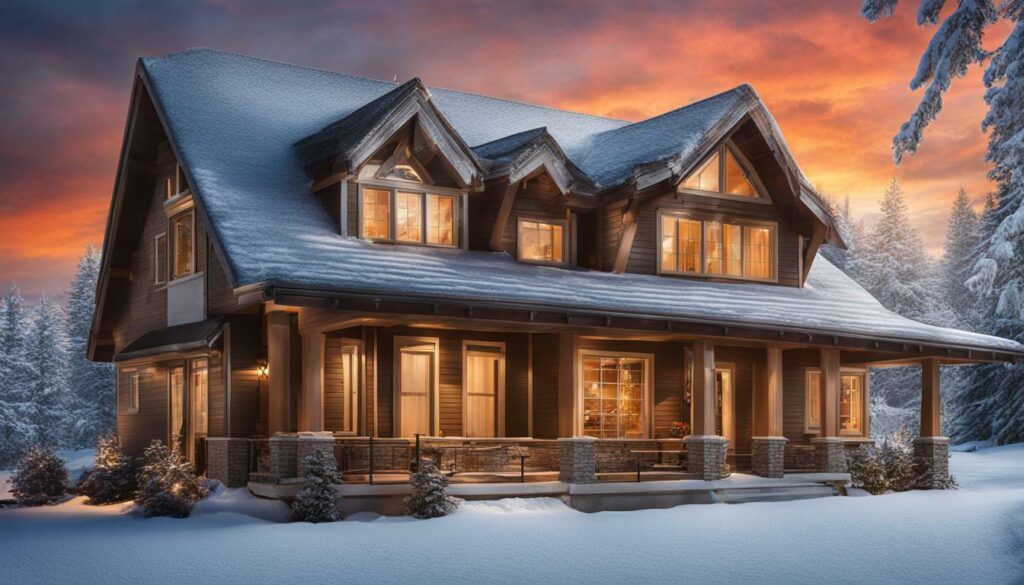
Roof ventilation works by establishing a continuous airflow in the attic through a combination of intake and exhaust vents, allowing for the efficient exchange of air. Intake vents are typically located along the roof’s lower edge or soffit, while exhaust vents are positioned near the ridge or the highest point of the roof. This setup creates a natural upward flow of air, where cooler air enters through the intake vents and pushes warm air out through the exhaust vents. The movement of air helps regulate temperature, prevent moisture buildup, and maintain a dry and healthy environment.
There are several types of roof ventilation systems that can be used to achieve the desired airflow. Some common options include soffit vents, gable vents, ridge vents, and turbine vents. Each of these systems has its own unique characteristics and benefits, and the choice depends on factors such as the roof design, climate, and personal preferences.
For optimal performance, it is important to have a balanced ventilation system with equal amounts of intake and exhaust vents, or slightly more intake vents for a slightly pressurized system. This balance ensures that air can freely enter and exit the attic, preventing any air stagnation or inequitable airflow. It is also crucial to choose high-quality ventilation products that are properly installed to maximize their effectiveness.
Types of Roof Ventilation Systems
| Roof Ventilation System | Description |
|---|---|
| Soffit Vents | Installed at the roof’s lower edge or soffit, allowing cool air to enter the attic. |
| Gable Vents | Positioned on the sides of the roof and facilitate air movement in and out of the attic. |
| Ridge Vents | Placed along the ridge or the highest point of the roof, allowing warm air to escape. |
| Turbine Vents | Mounted on the roof and powered by wind, spinning to create a suction effect that draws out hot air. |
Proper roof ventilation offers a range of benefits for homeowners. It improves energy efficiency by reducing the need for excessive cooling, lowers utility costs, and contributes to a more comfortable indoor environment. Additionally, it helps extend the lifespan of the roof by preventing moisture-related damage and reducing the risk of ice damming. By understanding how roof ventilation works and choosing the best ventilation system for their home, homeowners can ensure a healthier, more efficient, and longer-lasting roofing system.

To achieve an optimal roof ventilation system, it is recommended to have either equal amounts of intake and exhaust vents or slightly more intake vents for a slightly pressurized system. Proper roof ventilation plays a crucial role in maintaining a healthy and efficient home, offering numerous benefits for homeowners.
Firstly, by allowing moisture to escape from the attic, roof ventilation helps prevent condensation, mold, and rot. This is especially important in humid climates or during the winter months, when warm air inside the home can create a buildup of moisture. By providing a pathway for excess moisture to exit the attic, proper ventilation helps maintain a dry and mold-free environment.
Secondly, an effectively ventilated roof contributes to increased energy efficiency. By reducing heat buildup in the attic, ventilation helps lower cooling costs during hot summer months. It allows hot air to escape, preventing it from transferring down into the living spaces below, thus reducing the need for excessive air conditioning.
Furthermore, proper roof ventilation extends the lifespan of the roof itself. By keeping the wood framing and underlayment dry, ventilation helps prevent rot and decay. Moisture buildup can weaken the structural integrity of the roof, leading to costly repairs or even premature replacement. Therefore, investing in a quality roof ventilation system is essential to protect this valuable asset.
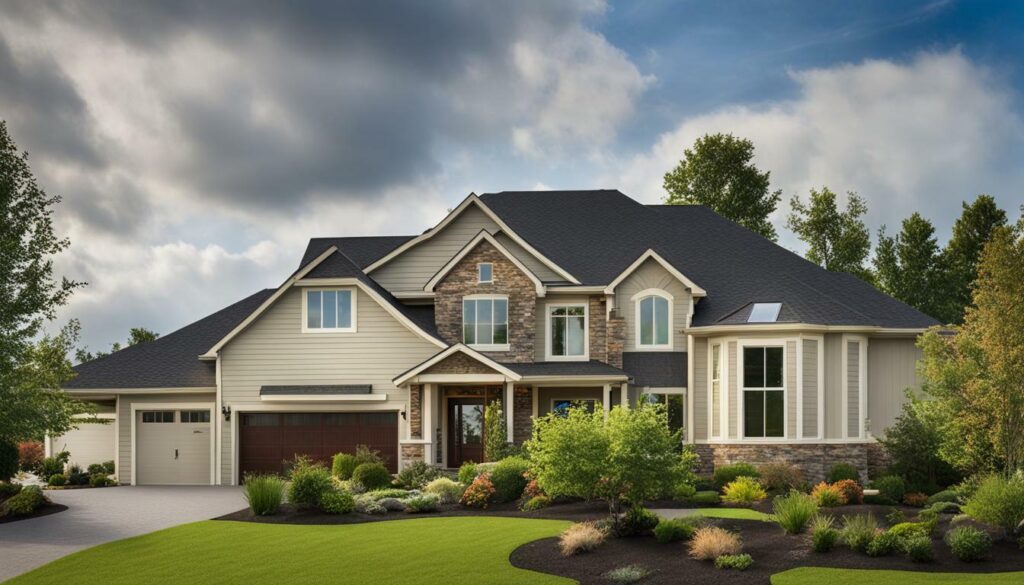
| Benefits of Proper Roof Ventilation |
|---|
| Prevents condensation, mold, and rot. |
| Reduces cooling costs and prevents heat buildup in the attic. |
| Extends the lifespan of the roof by keeping it dry. |
Lastly, roof ventilation improves indoor comfort by regulating temperature extremes. By allowing hot air to escape during summer and preventing cold air from seeping in during winter, proper ventilation helps create a more pleasant environment inside the home. It ensures that your living spaces stay comfortable year-round, reducing the need for excessive heating or cooling.
In conclusion, achieving an optimal roof ventilation system is crucial for the overall well-being of your home. It prevents moisture-related problems, increases energy efficiency, extends the lifespan of the roof, and enhances indoor comfort. By prioritizing proper roof ventilation, you can protect your investment, maintain a healthy living environment, and enjoy the long-term benefits it provides. Consult with a roofing professional to ensure you have the right ventilation system for your specific needs.
The Importance of Regular Maintenance
Regular maintenance of your roof ventilation system is crucial to ensure its effectiveness and reap the full benefits of proper attic ventilation. By taking the time to inspect and maintain your roof ventilation system, you can prevent potential issues and keep your home comfortable and energy-efficient.
One important aspect of maintenance is checking and cleaning the intake and exhaust vents. Over time, these vents can become clogged with debris, such as leaves, dust, or even bird nests. A clogged vent obstructs airflow, compromising the ventilation system’s efficiency. Regularly clearing out any obstructions will promote a continuous airflow, preventing moisture buildup and maintaining optimal ventilation.
In addition to clearing debris, it is also important to inspect the vents for any signs of damage or wear. Damaged vents, such as cracked or broken ones, can hinder proper ventilation and allow unwanted pests or elements to enter your attic. Repair or replace any damaged vents promptly to maintain the integrity of the system.
Lastly, as with any maintenance routine, it is recommended to schedule regular professional inspections for your roof ventilation system. A professional can identify any potential issues, such as leaks or improper installation, and provide necessary repairs or adjustments. This proactive approach to maintenance will help ensure your roof ventilation system functions optimally, providing all the benefits of proper attic ventilation.
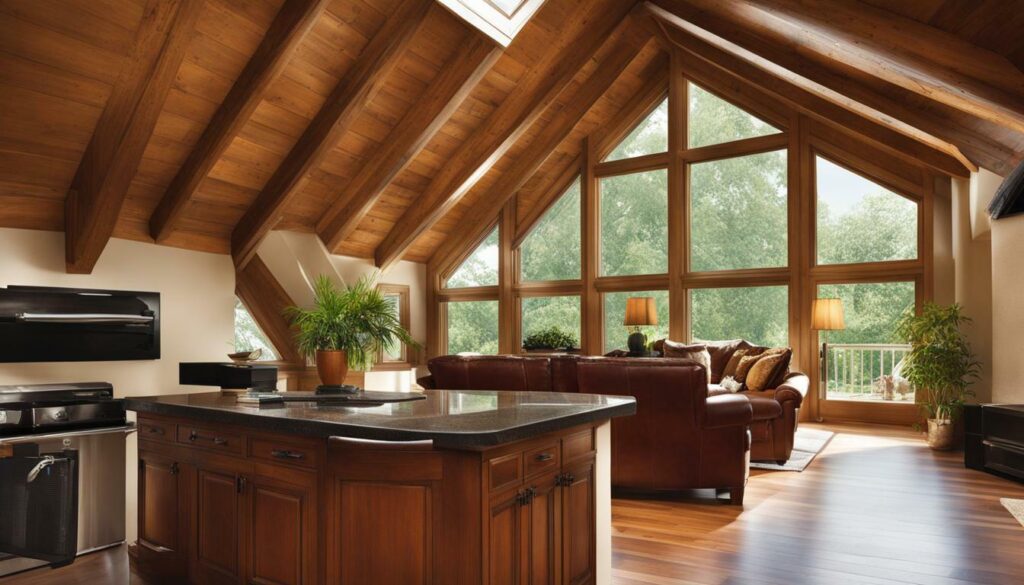
Investing in proper roof ventilation offers a range of long-term benefits, including improved energy efficiency, extended roof lifespan, enhanced indoor comfort, and prevention of ice damming in cold climates. Proper roof ventilation plays a crucial role in maintaining a healthy and functional home environment. Let’s explore these benefits in more detail.
Improved Energy Efficiency
One of the key advantages of having a well-ventilated roof is improved energy efficiency. By allowing air to circulate properly in the attic, roof ventilation helps to reduce the heat buildup during hot summer months. This, in turn, prevents excessive strain on your cooling system and lowers energy consumption, resulting in reduced cooling costs.
Similarly, during winter, effective roof ventilation helps to keep the attic space cool, preventing the formation of ice dams. Ice dams are a common problem in colder climates, and they can cause significant damage to the roof and interior of the home. By maintaining a consistent temperature in the attic, roof ventilation eliminates the conditions necessary for ice dams to form, saving you from potential repairs and costly damage.
Extended Roof Lifespan
Proper roof ventilation also plays a crucial role in extending the lifespan of your roof. By preventing the buildup of moisture and excessive heat, ventilation helps to keep the wood framing and underlayment dry. This reduces the risk of rot, mold, and other issues that can compromise the structural integrity of the roof. A well-ventilated roof can withstand the elements more effectively and last longer, saving you money on premature roof replacements.
Enhanced Indoor Comfort
Roof ventilation contributes to enhanced indoor comfort by regulating temperature extremes. During hot summer days, a properly ventilated attic prevents the heat from penetrating into the living spaces below, creating a more comfortable environment. Similarly, in colder months, ventilation helps to keep the attic cool, preventing temperature imbalances and drafts. Improved indoor comfort not only enhances your overall living experience but also reduces the demand for heating and cooling, leading to energy savings.
In conclusion, proper roof ventilation offers numerous long-term benefits for your home. It improves energy efficiency, extends the lifespan of your roof, enhances indoor comfort, and prevents the formation of ice dams. By investing in the best roof ventilation systems and maintaining regular upkeep, you can enjoy a more energy-efficient, comfortable, and durable home for years to come.
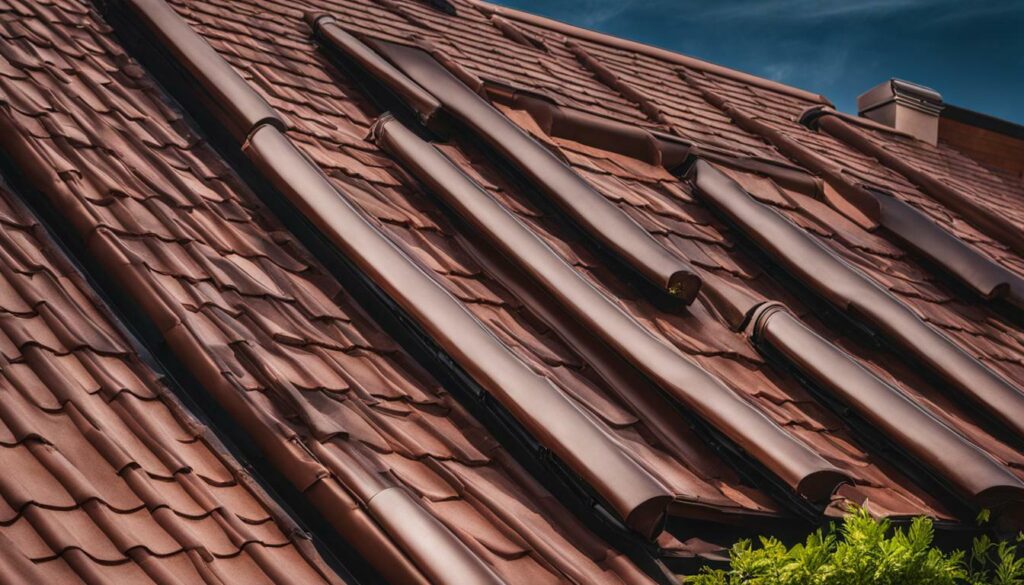
Prioritizing roof ventilation is essential for maintaining your home’s structural integrity, preventing moisture-related problems, and ensuring long-term benefits such as energy efficiency and extended roof lifespan.
Proper roof ventilation plays a crucial role in preventing condensation, mold, and rot by allowing moisture to escape from the attic. By providing a pathway for moist air to exit, roof ventilation helps keep the attic dry, reducing the risk of costly damage and health hazards caused by excess moisture.
In addition to moisture prevention, roof ventilation also enhances energy efficiency. By reducing cooling costs and preventing heat buildup in the attic, proper roof ventilation helps regulate the temperature in your home, resulting in a more comfortable living environment while lowering your energy bills.
Furthermore, roof ventilation contributes to the longevity of your roof. By keeping the wood framing and underlayment dry, it minimizes the risk of decay and extends the lifespan of your roof. Investing in an effective roof ventilation system can save you from the hassle and expense of premature roof replacement.
In cold climates, proper roof ventilation is especially important in preventing ice damming. By redirecting warm air away from the roof, roof ventilation helps prevent the formation of ice dams, which can cause significant damage to your roof and interior spaces.
Overall, prioritizing roof ventilation is a wise decision that offers numerous benefits. By maintaining proper attic ventilation, you can improve energy efficiency, increase comfort, extend the life of your roof, reduce the risk of ice dams, and promote better air quality in your home.
FAQ
Q: What is the importance of roof ventilation?
A: Proper roof ventilation is crucial for preventing moisture-related issues, improving energy efficiency, extending roof lifespan, enhancing indoor comfort, and preventing ice damming.
Q: How does roof ventilation prevent condensation, mold, and rot?
A: Roof ventilation allows moisture to escape from the attic, preventing condensation, mold, and rot by maintaining a dry and healthy environment.
Q: How does roof ventilation increase energy efficiency?
A: By reducing cooling costs and preventing heat buildup in the attic, roof ventilation helps improve energy efficiency in the home.
Q: How does roof ventilation extend the lifespan of the roof?
A: Proper roof ventilation keeps the wood framing and underlayment dry, which helps prevent deterioration and extends the lifespan of the roof.
Q: How does roof ventilation regulate indoor temperature extremes?
A: Roof ventilation helps balance indoor temperatures by allowing hot air to escape from the attic, making the home more comfortable throughout the year.
Q: How does roof ventilation prevent ice damming?
A: Roof ventilation directs warm air away from the roof, preventing the formation of ice dams in cold climates.
Q: How does roof ventilation work?
A: Roof ventilation works by having intake and exhaust vents that create a continuous airflow in the attic, allowing for proper ventilation.
Q: How can I achieve an optimal roof ventilation system?
A: It is recommended to have equal amounts of intake and exhaust vents or slightly more intake vents for a slightly pressurized system for optimal roof ventilation.
Q: Why is regular maintenance important for roof ventilation?
A: Regular maintenance ensures the effectiveness of roof ventilation systems, helping to prevent issues and maintain proper attic ventilation.
Q: What are the long-term benefits of roof ventilation?
A: The long-term benefits of roof ventilation include improved energy efficiency, extended roof lifespan, enhanced indoor comfort, and prevention of ice damming.
Q: Why should I prioritize roof ventilation for my home?
A: Proper roof ventilation is essential for maintaining a home’s structural integrity, preventing moisture-related problems, and ensuring optimal energy efficiency and comfort.

